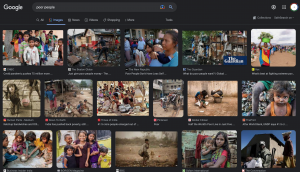Dana’s post is here.
Hi Dana,
I was so intrigued by your write-up that I just had to cheat and find out what the movie was via a Google search. Honestly, without the synopsis, I would have never figured it out. I loved how you approached this task – the simplicity of your emoji interpretation juxtaposed with the depth of your ideas and connections with other readings, as well as your personal work experiences, really bring the idea of changing media literacies home.
Like your approach, I tried to keep things straightforward, especially with the title, but I attempted to depict a summarized plot with the same process. Your final comment struck me: “It is a peek into my lifeworld while also allowing an understanding of my fellow classmates’ lifeworld.” I think this idea resonates with my reflection (in my post) that emojis are not as ‘universal’ as people think but rather “steeped in the culture and history of its speakers” (Leonardi, 2022).
For example, my first experience of online ‘chat’ or texting was via mIRC in the 90s, an early instant messaging chat that used emotes – text indicating an action is taking place and a precursor to emojis. So, the first part of my post to you would read as follows:
I was so intrigued by your write-up that I just had to cheat and find out what the movie was via a Google search *blushes with shame.* Honestly, without the synopsis, I would have never figured it out *breathes a sigh of relief.* I love how you approached this task *makes a star-struck smiling face* – the simplicity of your emoji interpretation juxtaposed with the depth of your ideas and connections with other readings, as well as your personal work experiences, really brings the idea of changing media literacies home *gives you a big thumb’s up.*
Of course, because of my now-frequent use of emojis, I can’t help but unconsciously emote with them; however, it is interesting to think about Kress’s ‘gains and losses’ when comparing emoting to emojis. Emojis are definitely the faster draw, but as we experienced in this task, they have a limited vocabulary for abstract and complex concepts.
Thank you, I really enjoyed your post!
*smiles*
References:
Leonardi, V. (2022, October 18). Are Emojis Really a Lingua Franca? – De Gruyter Conversations. De Gruyter Conversations. https://blog.degruyter.com/are-emojis-really-a-lingua-franca/
Wikipedia contributors. (2023a, January 11). Emote. Wikipedia. https://en.wikipedia.org/wiki/Emote
Wikipedia contributors. (2023b, April 7). Internet Relay Chat. Wikipedia. https://en.wikipedia.org/wiki/Internet_Relay_Chat


